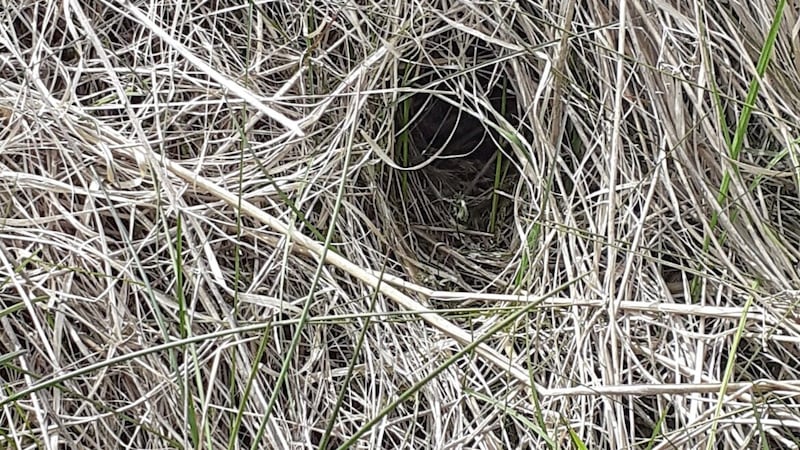THE month of May traditionally signalled the arrival of summer and the pastoral growing season for our Celtic ancestors, who celebrated the reawakening of the earth in their Beltane festival of fire and fertility.
Much merriment and dance occurred around bonfires and maypoles draped with flowers, to mark the bright days, invigorating scents, and restorative powers of the season.
In recent weeks much of what they ritualised and summoned has been evident all around us as trees and hedges harbour the begging sounds of hungry young, to exhausted parents, and heady whiffs waft from the abundance of cow parsley’s white flowers along our thickening verges.
Hawthorn hedges or ‘May blossoms’ have been displaying their heavy pink-white blossoms as they lean forward over thorny stems, creating linear patterns, snaking across lush green fields of bleating lambs, far into the distance.
The cuckoo’s call, that menacing sound to hosts, like pipit and dunnock has been heard, and the swift, with dark narrow scythe like wings has now joined our swallows and martins from afar, screeching through the sky high and low in frenzied chases.
We’re almost fully tilted towards the sun, with the natural world responding in the similar joyous way our ancient Celtic relatives did on summer evenings.
Just last week I watched an enthusiastic pair of stonechats as they busily carried food to their young, out of sight, tunnelled away low to the ground in their concealed nest.
Its Irish name, Caislín cloch, the stone chatterer, reflects the sound it makes, resembling stones being tapped together, often the first sign of its presence. This chattering, the origin of a belief in English folklore that the bird is continually ‘chatting with the devil’. It was while stopping to scan for hen harriers across the bog and forests close to Lough Bradan, I heard and then spotted the male stonechat perched on top of a nearby furze bush.
The male displays a black head with a white neck stripe and orangey-red breast. While the female is much paler, lacking the male’s black head she has an orange tinge to her chest.
The arrival of the female bird with a beakful of grubs on a wire fence indicated a hungry brood was somewhere close. Aware of my presence, both birds flitted around making agitated calls, reluctant to reveal the location of their nest, so I moved away giving them space to provision their young.
It wasn’t long however before the male returned with more food and this time, I waited to see the bird drop low and disappear into dense grassy vegetation close to the ground.
After the male left, I moved closer to the area and spotted the circular entrance to the nest, a carefully crafted hideaway, cosy but vulnerable.
Saxicola rubicola hibernans, is a resident bird, widespread across Ireland especially along our coasts and uplands. Its scientific Latin name Saxicola means ‘rock-dweller’ and rubicola, ‘bramble-dweller’ indicating the bird’s preferred habitats with hibernans referring to the subspecies of Northwestern Europe, including Ireland. The bird was frequently called ‘stone-chatter’, ‘stone smich’ and ‘stone clink’ as late as the 18th century recorded by early ornithologists, Turner and Pennant.
The whinchat, a summer visitor, and relative is paler with a distinctive white eyestripe and is found in lower lying meadows and open country.
Having witnessed the intimate behaviour of the small stone chatterers, I turned my attention to the distant forestry, to be rewarded with the sight of a male hen harrier, its grey frame ghosting through the tress. I hoped a female and some chicks were waiting somewhere close.








